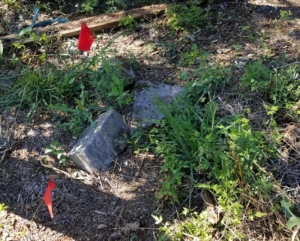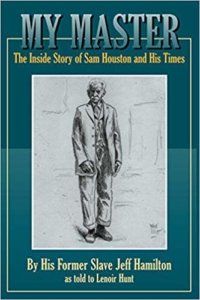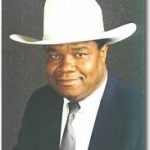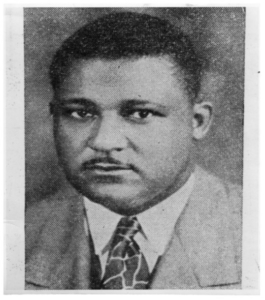How Reconstruction Still Shapes American Racism
Image: First black legislators in Congress
(Time) By Henry Louis Gates, Jr.
During an interview with Chris Rock for my PBS series African American Lives 2, we traced the ancestry of several well-known African Americans. When I told Rock that his great-great-grandfather Julius Caesar Tingman had served in the U.S. Colored Troops during the Civil War — enrolling on March 7, 1865, a little more than a month after the Confederates evacuated from Charleston, S.C. — he was brought to tears. I explained that seven years later, while still a young man in his mid-20s, this same ancestor was elected to the South Carolina house of representatives as part of that state’s Reconstruction government. Rock was flabbergasted, his pride in his ancestor rivaled only by gratitude that Julius’ story had been revealed at last. “It’s sad that all this stuff was kind of buried and that I went through a whole childhood and most of my adulthood not knowing,” Rock said. “How in the world could I not know this?”
I realized then that even descendants of black heroes of Reconstruction had lost the memory of their ancestors’ heroic achievements. I have been interested in Reconstruction and its tragic aftermath since I was an undergraduate at Yale University, and I have been teaching works by black authors from the second half of the 19th century for decades. But the urgent need for a broader public conversation about the period first struck me only in that conversation with Rock.
Reconstruction, the period in American history that followed the Civil War, was an era filled with great hope and expectations, but it proved far too short to ensure a successful transition from bondage to free labor for the almost 4 million black human beings who’d been born into slavery in the U.S. During Reconstruction, the U.S. government maintained an active presence in the former Confederate states to protect the rights of the newly freed slaves and to help them, however incompletely, on the path to becoming full citizens. A little more than a decade later, the era came to an end when the contested presidential election of 1876 was resolved by trading the electoral votes of South Carolina, Louisiana and Florida for the removal of federal troops from the last Southern statehouses.
Today, many of us know precious little about what happened during those years. But, regardless of its brevity, Reconstruction remains one of the most pivotal eras in the history of race relations in American history — and probably the most misunderstood. (more)
Related: Black Leaders During Reconstruction
One of the most important aspects of Reconstruction was the active participation of African Americans (including thousands of former slaves) in the political, economic and social life of the South. The era was to a great extent defined by their quest for autonomy and equal rights under the law, both as individuals and for the black community as a whole. During Reconstruction, some 2,000 African Americans held public office, from the local level all the way up to the U.S. Senate, though they never achieved representation in government proportionate to their numbers. (more)
Historians Deploy Science To Explore African American History In San Antonio

Exploring a re-discovered African-American cemetery in San Antonio. (Photo: Ryan Poppe/Texas Public Radio)
(KSTX/Texas Public Radio) Researchers and students from Texas A&M University at San Antonio used ground-penetrating radar to examine a rediscovered African American cemetery. The site was linked to historic black settlements on the north side of the city.
Neighbors living in area contacted Everett Fly with the San Antonio African American Community Archive and Museum in 2017 when they discovered the abandoned Hockley Cemetery between an alley behind Northern Hills Elementary School.
“You would know in San Antonio we have the Alamo. We have the Riverwalk. We have the Missions. We saved everything except historic African American properties. We erased a lot of it. We’ve let a lot of it go,” Fly said. (more)
Blackshear Elementary School alumni celebrates Professor Friendly R. Rice with mural unveiling in Austin
The Third Annual Professor Friendly R. Rice Birthday Anniversary Celebration will be held at Blackshear Elementary School Fine Arts Academy on Friday, April 26, featuring the unveiling of a mural — by Ryan Runcie — dedicated to Rice, who in the 1930s established the first library at a Black elementary school in the Southwest.
The ceremonies will be held from 7:45 a.m. – 10:15 a.m.
In 1931, Rice earned a bachelor’s degree in Education from Prairie View A & M College (now University) and a master’s degree in Education Administration at Columbia University in New York in 1938. His elders called him “Professor Rice” because of his advanced degree. In 1931, he began his career with the Austin Public School System during the era of segregation as Blackshear Elementary School’s Assistant Principal. He became the Supervising Principal in 1933 and would lead the school until his retirement in 1972. He also served as the first principal at Rosewood Elementary School (formerly renamed Rice Elementary School, now ICan Academy) and was principal at St. John’s Elementary School.
Rice, widely viewed as a leading, progressive educator had free rein to implement his innovative ideas – collaborating with social service agencies to serve what we today call “At Risk” kids, establishing the library, and providing hot lunches for kids, an innovative idea that would soon become the norm throughout the District. He also started the school’s first outdoor garden.
Blackshear is located at 1712 East 11th Street.
TIPHC Bookshelf
 Published scholarship on black history in Texas is growing and we’d like to share with you some suggested readings, both current and past, from some of the preeminent history scholars in Texas and beyond. We invite you to take a look at our bookshelf page – including a featured selection – and check back as the list grows. A different selection will be featured each week. We welcome suggestions and reviews. This week, we offer, “My Master, The Inside Story of Sam Houston and His Times,” by His Former Slave Jeff Hamilton, as told to Lenoir Hunt.
Published scholarship on black history in Texas is growing and we’d like to share with you some suggested readings, both current and past, from some of the preeminent history scholars in Texas and beyond. We invite you to take a look at our bookshelf page – including a featured selection – and check back as the list grows. A different selection will be featured each week. We welcome suggestions and reviews. This week, we offer, “My Master, The Inside Story of Sam Houston and His Times,” by His Former Slave Jeff Hamilton, as told to Lenoir Hunt.
Jeff Hamilton, only thirteen when purchased in 1853 by Sam Houston at a slave auction in Huntsville, Texas, was Houston’s personal body servant during the period Houston was U.S. Senator, during both governorships, and was with Houston at his death. Originally published in 1940 shortly before Hamilton died at age 100, these memoirs contain Hamilton’s fascinating and intimate viewpoints of the important issues during the last years of Houston’s life.
Aware of Hamilton’s narrative abilities and of the historical importance of his first-hand accounts of one of our nation’s most prominent figures, the 1936 Centennial Association of Texas commissioned Lenoir Hunt, author of Bluebonnets and Blood to interview Hamilton to “save for posterity his rare recollections . . . one of the very few men now living who passed through the hates and passions of the 1850s and 1860s and who may give us an eyewitness picture of life and conditions in that eventful era.” And what a picture! Hamilton saw “most of the meanness as well as the good things that were going on about me. . . . there are not many boys who have the distinction of being whipped by one of the great men of history.”
Containing revealing and intimate anecdotes nowhere else published, My Master is a valuable contribution to American folklore and history. In Hamilton, Lenoir Hunt had found “a guileless old soul who could give me from an entirely new angle a simple account of the stirring times in which he lived . . . an aged Boswell anxious to tell the inside story of the colorful empire-maker who had liberated a people and who directly and indirectly had added over a million square miles to the area of the United States.”
This Week in Texas Black History
Apr 21
 This date marks the commemoration of the song The Yellow Rose of Texas. The song grew out of the Battle of San Jacinto when Texas forces led by Sam Houston defeated the Mexican troops of Gen. Santa Anna in 1836 and won Texas’ independence from Mexico. The song is a tribute to a woman (Emily West) who supposedly “entertained” the Mexican general, delaying his preparations for the battle, while the Texians successfully attacked and defeated his army in an 18-minute skirmish. However, the woman’s true identity and actual role, if any, in the battle is the subject of great debate. Generally, she is thought to have been a light-skinned mulatto, but other theories say she was Hispanic. The songs’ composer is also a mystery, though its original lyrics seem to suggest a black man:
This date marks the commemoration of the song The Yellow Rose of Texas. The song grew out of the Battle of San Jacinto when Texas forces led by Sam Houston defeated the Mexican troops of Gen. Santa Anna in 1836 and won Texas’ independence from Mexico. The song is a tribute to a woman (Emily West) who supposedly “entertained” the Mexican general, delaying his preparations for the battle, while the Texians successfully attacked and defeated his army in an 18-minute skirmish. However, the woman’s true identity and actual role, if any, in the battle is the subject of great debate. Generally, she is thought to have been a light-skinned mulatto, but other theories say she was Hispanic. The songs’ composer is also a mystery, though its original lyrics seem to suggest a black man:
There’s a yellow rose in Texas
That I am going to see
No other darky (sic) knows her
No one only me
She cryed (sic) so when I left her
It like to broke my heart
And if I ever find her
We nevermore will part.
Apr 23
 On this date in 2004, Earl Pearson, then a 28-year veteran of the Texas Department of Public Safety, was named chief of the Texas Ranger Division. With his promotion, Pearson became the first black Senior Ranger Captain and the first black DPS division chief. Pearson grew up in Rotan.
On this date in 2004, Earl Pearson, then a 28-year veteran of the Texas Department of Public Safety, was named chief of the Texas Ranger Division. With his promotion, Pearson became the first black Senior Ranger Captain and the first black DPS division chief. Pearson grew up in Rotan.
Apr 23
 On this day in 1928, black college football great Odie Posey was born in Austin. Posey, a running back, graduated from Phillis Wheatley High School in San Antonio and then attended Southern University in Baton Rouge, La. on a tennis scholarship. Posey teamed with Harold Jones in 1947 to capture the Prairie View Interscholastic League 2A Boys’ Double state championship title. At Southern, Posey became the best running back in school history. His 1,399-yards rushing total in 1949 led the nation (NCAA Division II) and still stands as the highest single-season mark in school history. During his four years at Southern, the Jaguars were 46-2-2 (undefeated, 12-0, in 1948), won three Black College National Championships, four Southwestern Athletic Conference titles and two bowl games, including the 1948 Fruit Bowl Championship against San Francisco State University. Posey was a four-time Pittsburgh Courier All-American and a four-year All-SWAC selection.
On this day in 1928, black college football great Odie Posey was born in Austin. Posey, a running back, graduated from Phillis Wheatley High School in San Antonio and then attended Southern University in Baton Rouge, La. on a tennis scholarship. Posey teamed with Harold Jones in 1947 to capture the Prairie View Interscholastic League 2A Boys’ Double state championship title. At Southern, Posey became the best running back in school history. His 1,399-yards rushing total in 1949 led the nation (NCAA Division II) and still stands as the highest single-season mark in school history. During his four years at Southern, the Jaguars were 46-2-2 (undefeated, 12-0, in 1948), won three Black College National Championships, four Southwestern Athletic Conference titles and two bowl games, including the 1948 Fruit Bowl Championship against San Francisco State University. Posey was a four-time Pittsburgh Courier All-American and a four-year All-SWAC selection.
Apr 24
 On this date in 1944, The United Negro College Fund was incorporated with 27 member schools (now 38). Mary Branch, president of Tillotson College in Austin, helps to establish the organization. The UNCF’s mission is to enhance the quality of education by raising operating funds for their member colleges and universities, providing financial support to deserving students, and increasing access to technology for students and faculty at Historically Black Colleges and Universities (HBCUs). Both The Non-Profit Times and The Chronicle of Philanthropy have ranked UNCF among the top 10 charitable educational organizations in the country.
On this date in 1944, The United Negro College Fund was incorporated with 27 member schools (now 38). Mary Branch, president of Tillotson College in Austin, helps to establish the organization. The UNCF’s mission is to enhance the quality of education by raising operating funds for their member colleges and universities, providing financial support to deserving students, and increasing access to technology for students and faculty at Historically Black Colleges and Universities (HBCUs). Both The Non-Profit Times and The Chronicle of Philanthropy have ranked UNCF among the top 10 charitable educational organizations in the country.
Apr 25
 Robert Leon Wormley, who opened the first black-owned insurance agency (Wormley-Mitchell & Associates) in Austin in 1954, died on this day at age 82 in 2010. A Minneapolis, Minn. native, Wormley was a Civil Rights activist who helped picket businesses that practiced segregation and worked to improve life for Austin’s black community. He worked on poverty issues for Govs. Preston Smith and John Connelly. Wormley was the first black member of the Independent Insurance Agents of Austin.
Robert Leon Wormley, who opened the first black-owned insurance agency (Wormley-Mitchell & Associates) in Austin in 1954, died on this day at age 82 in 2010. A Minneapolis, Minn. native, Wormley was a Civil Rights activist who helped picket businesses that practiced segregation and worked to improve life for Austin’s black community. He worked on poverty issues for Govs. Preston Smith and John Connelly. Wormley was the first black member of the Independent Insurance Agents of Austin.
Blog: Ron Goodwin, Ph.D., author, PVAMU history professor
Ron Goodwin is an assistant professor of history at Prairie View A&M University. Even though he was a military “brat,” he still considers San Antonio home. Like his father and brother, Ron joined the U.S. Air Force and while enlisted received his undergraduate degree from Texas Lutheran University in Seguin, Texas. After his honorable discharge, he completed graduate degrees from Texas Southern University. Goodwin’s book, Blacks in Houston, is a pictorial history of Houston’s black community. His most recent book, Remembering the Days of Sorrow, examines the institution of slavery in Texas from the perspective of the New Deal’s Slave Narratives.
Recent Posts
The Everlasting Light
Ye are the light of the world. A city that is set on an hill cannot be hid. Neither do men light a candle, and put it under a bushel, but on a candlestick; and it givith light unto all that are in the house. Let your light so shine before men, that they may see your good works, and glorify your Father which is in heaven. — Matthew 5: 14-16
This is the month set aside to honor…(more)
The Return of the Silent Majority
Fifty years ago, in January 1969, Richard Nixon was sworn in as the thirty-seventh president of the United States. His legacy as President was marred by the Watergate investigations and his eventual resignation from office which overshadowed the way in which he won the office. His central campaign rhetoric was designed to garner support from white Southerners (otherwise known in history as the “Silent Majority”) whose racial beliefs leaned heavily towards the support of white…(more)
Submissions wanted
Historians, scholars, students, lend us your…writings. Help us produce the most comprehensive documentation ever undertaken for the African American experience in Texas. We encourage you to contribute items about people, places, events, issues, politics/legislation, sports, entertainment, religion, etc., as general entries or essays. Our documentation is wide-ranging and diverse, and you may research and write about the subject of your interest or, to start, please consult our list of suggested biographical entries and see submission guidelines. However, all topics must be approved by TIPHC editors before beginning your research/writing.
We welcome your questions or comments. Please contact Michael Hurd, Director of TIPHC, at mdhurd@pvamu.edu.

